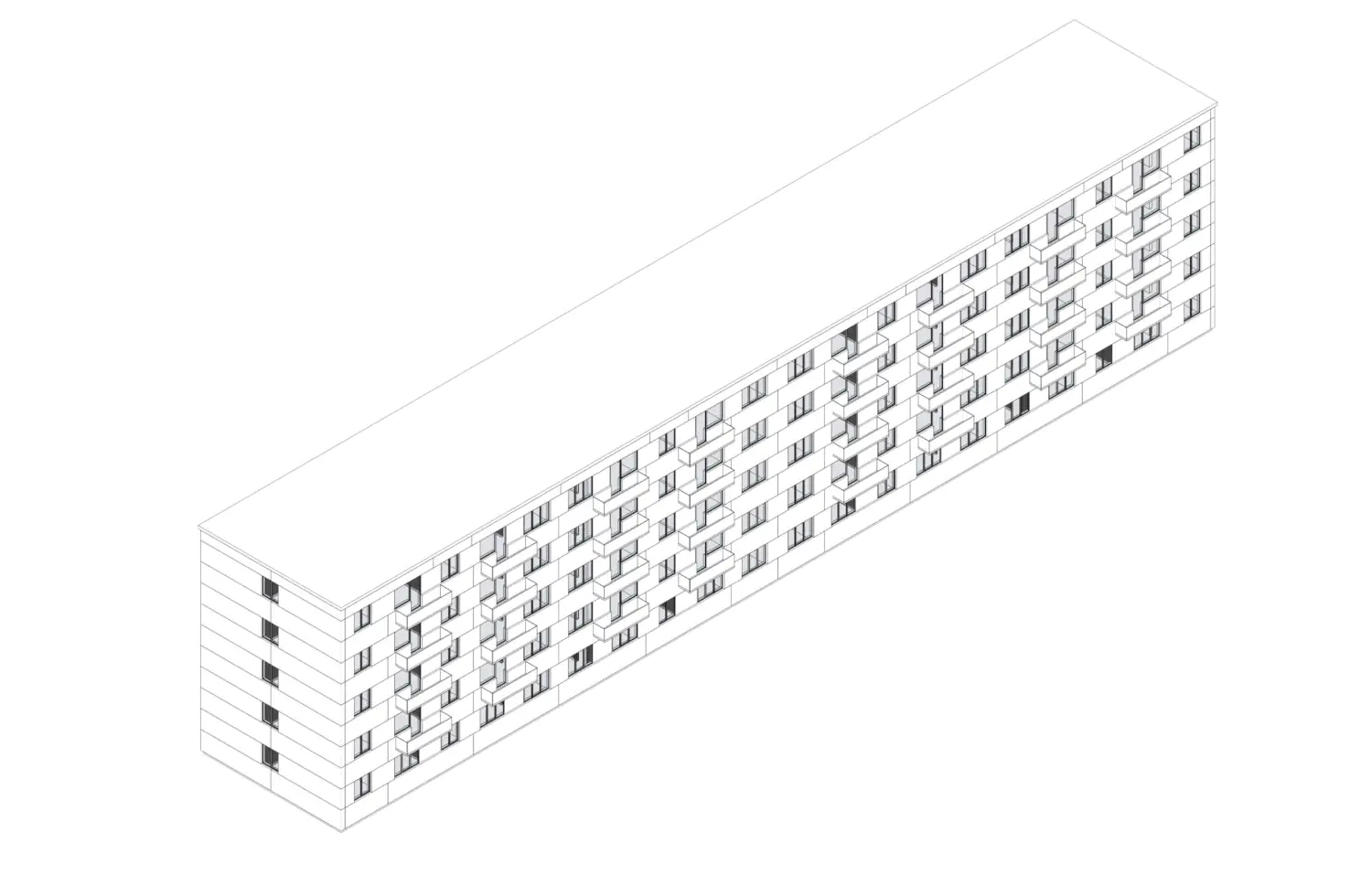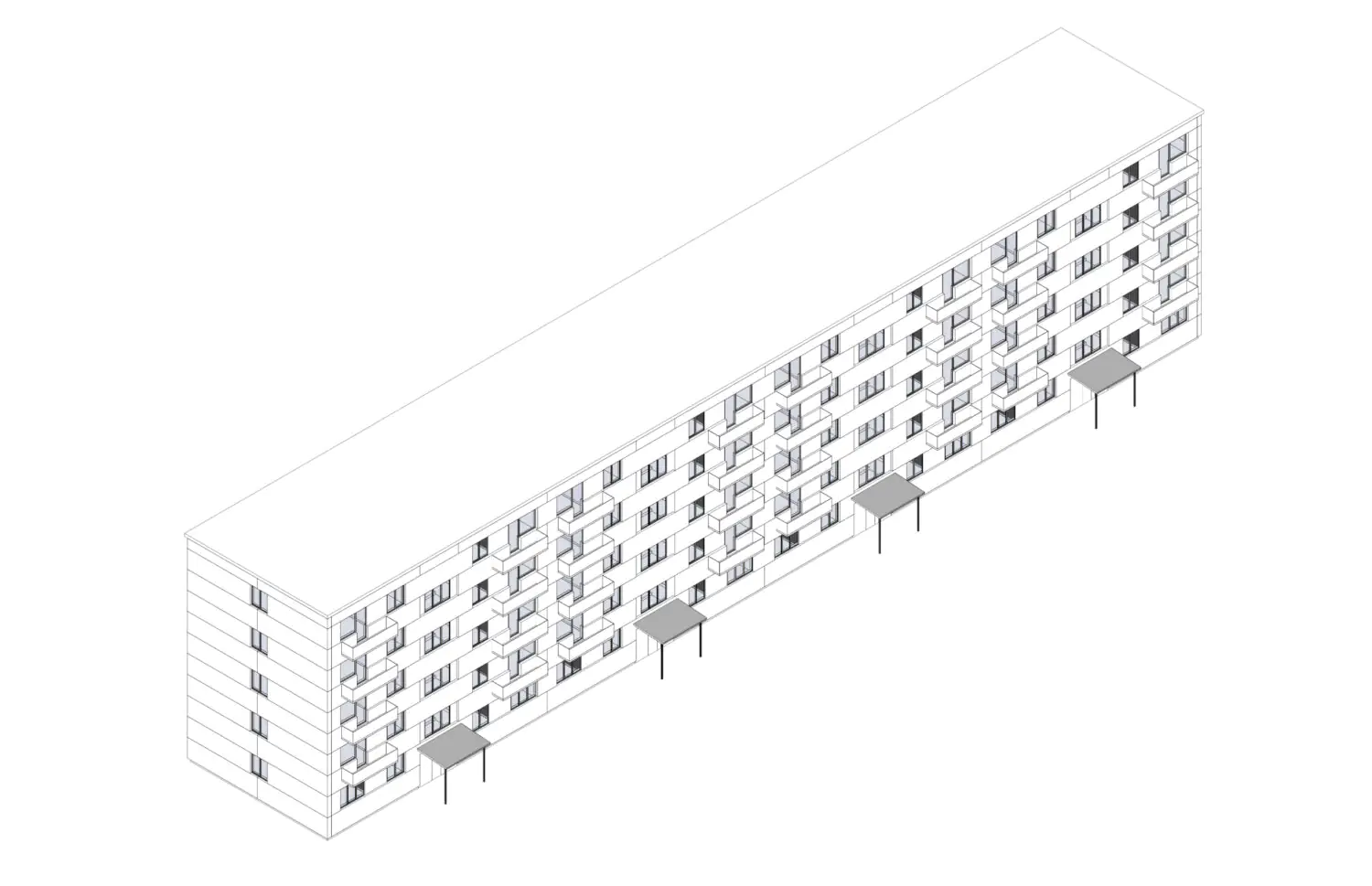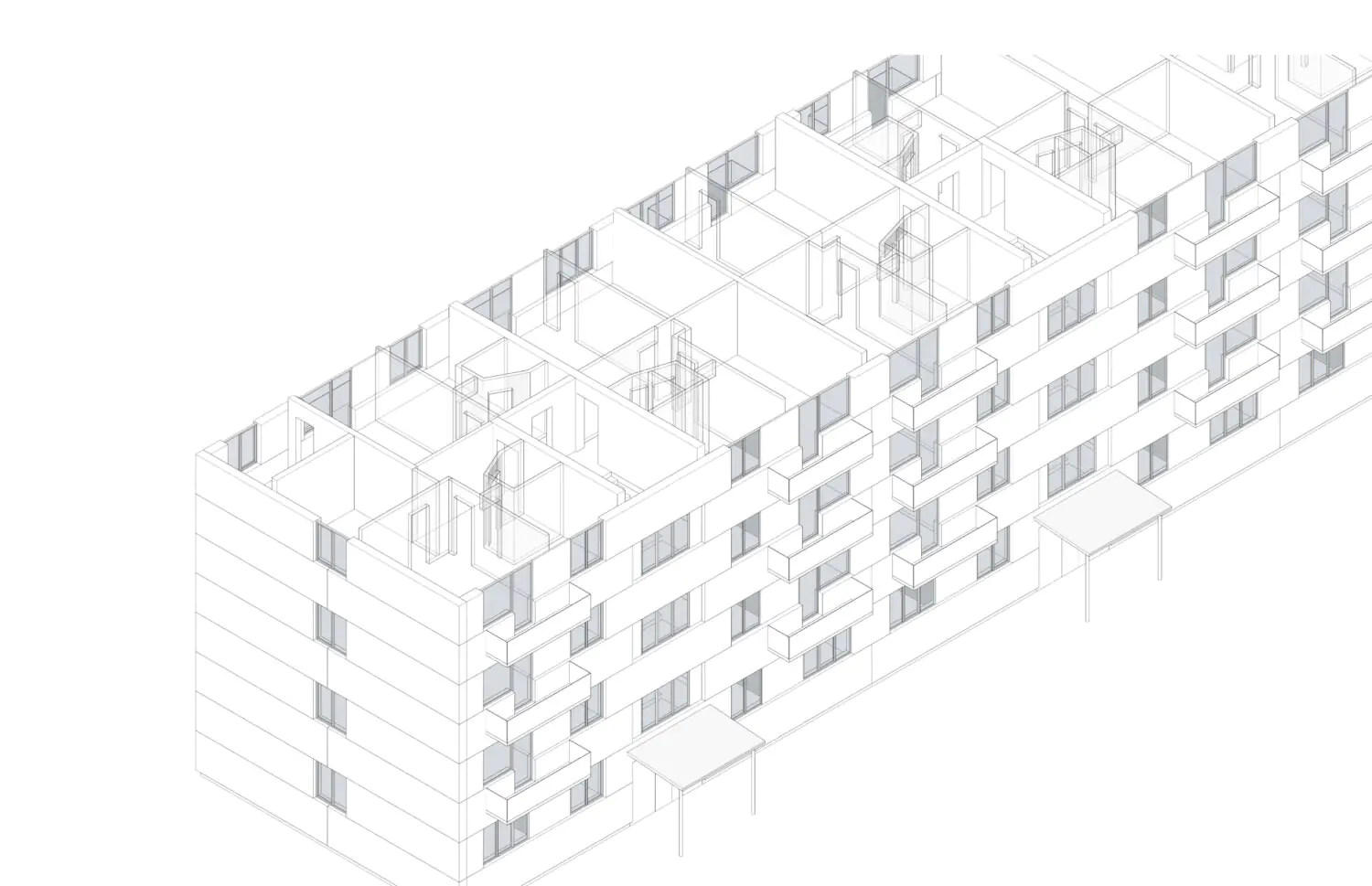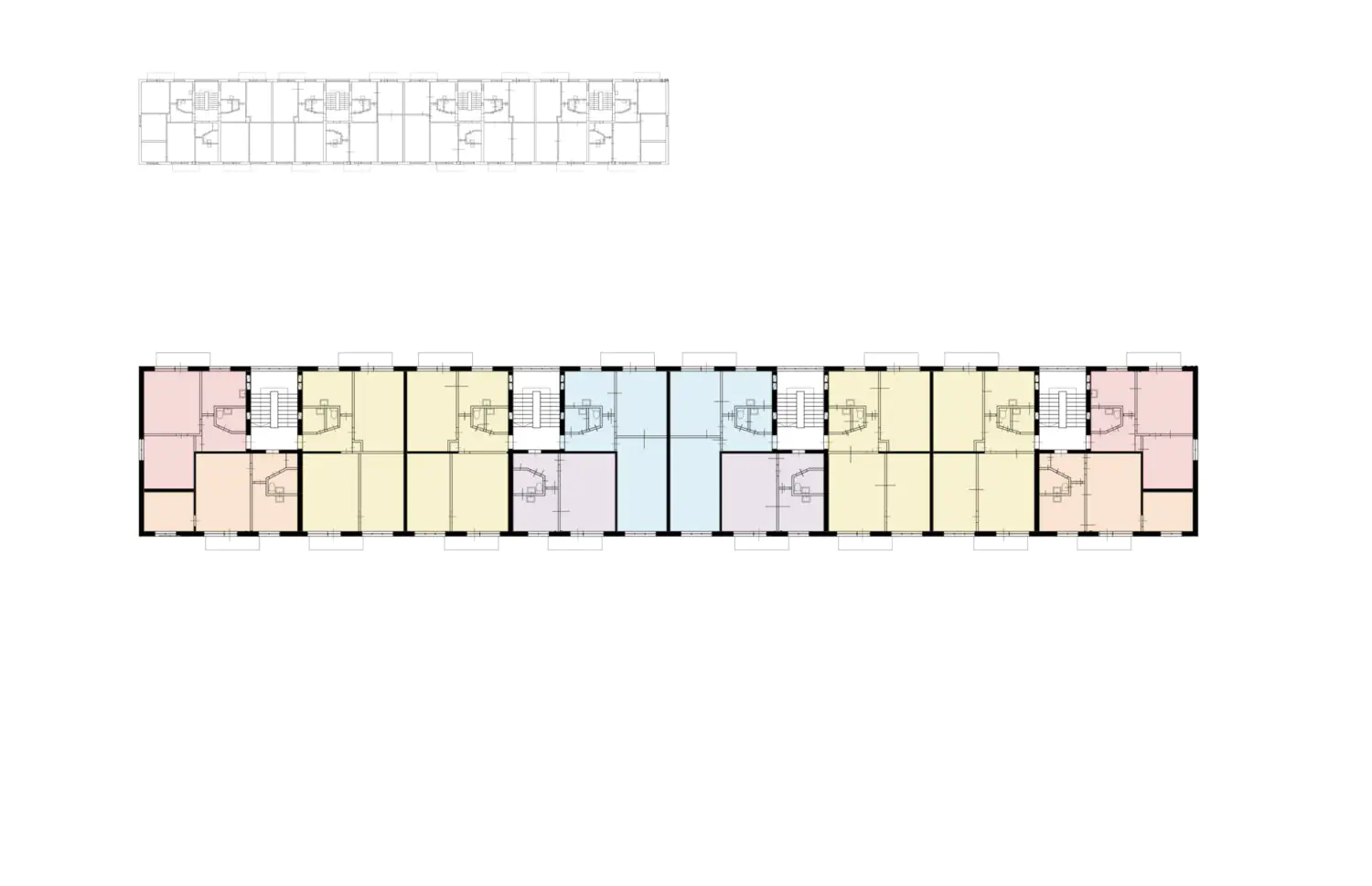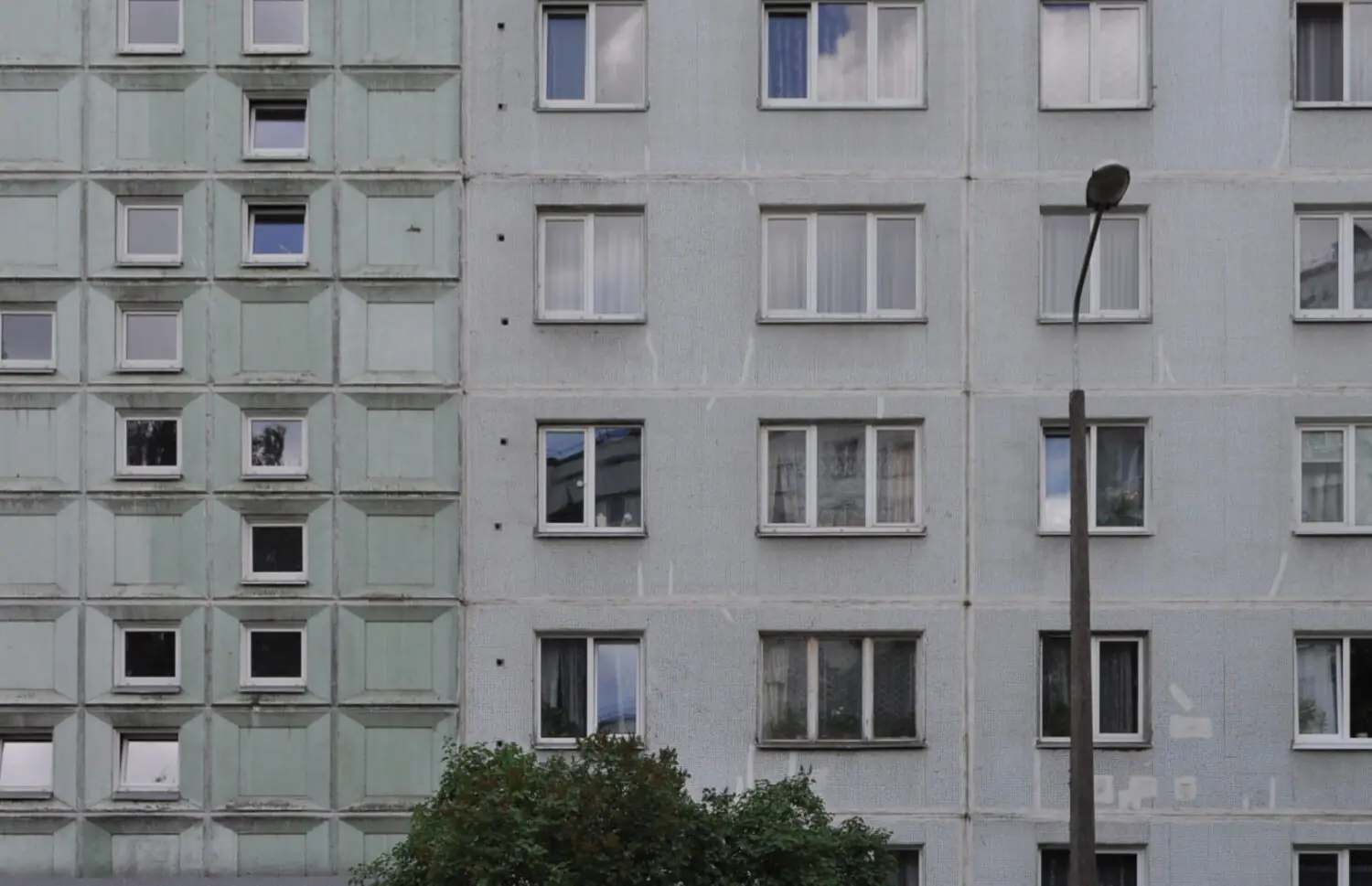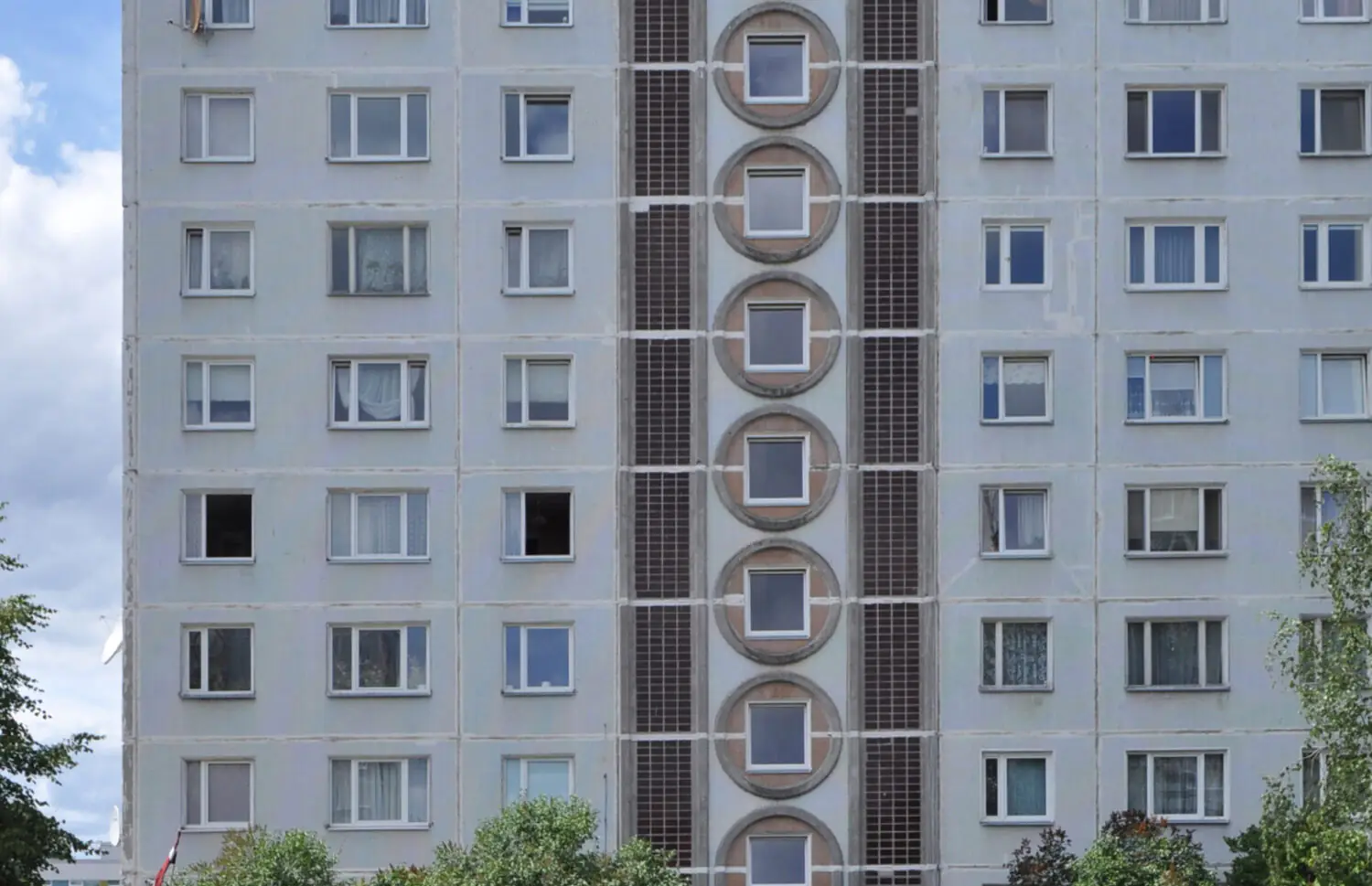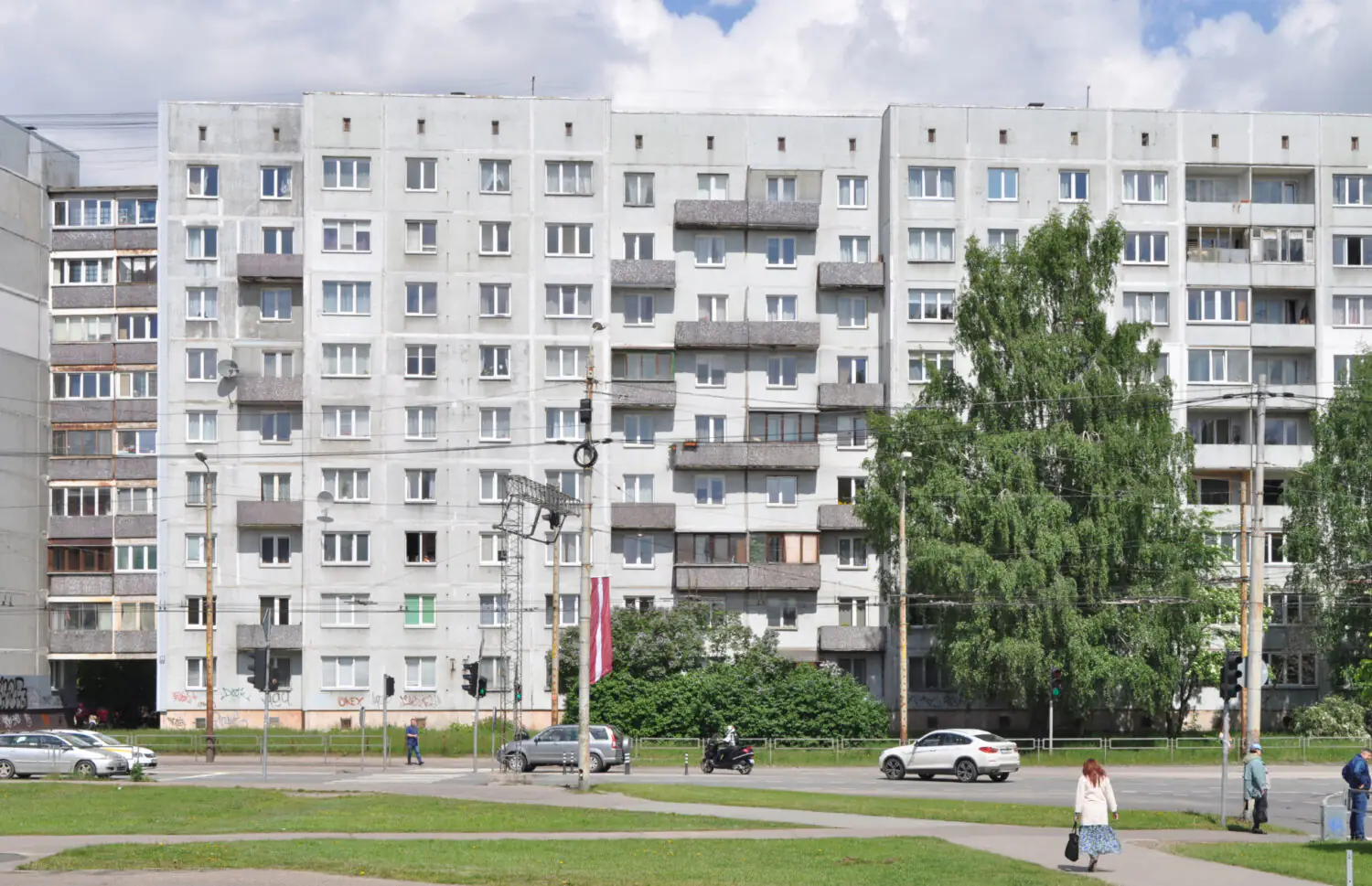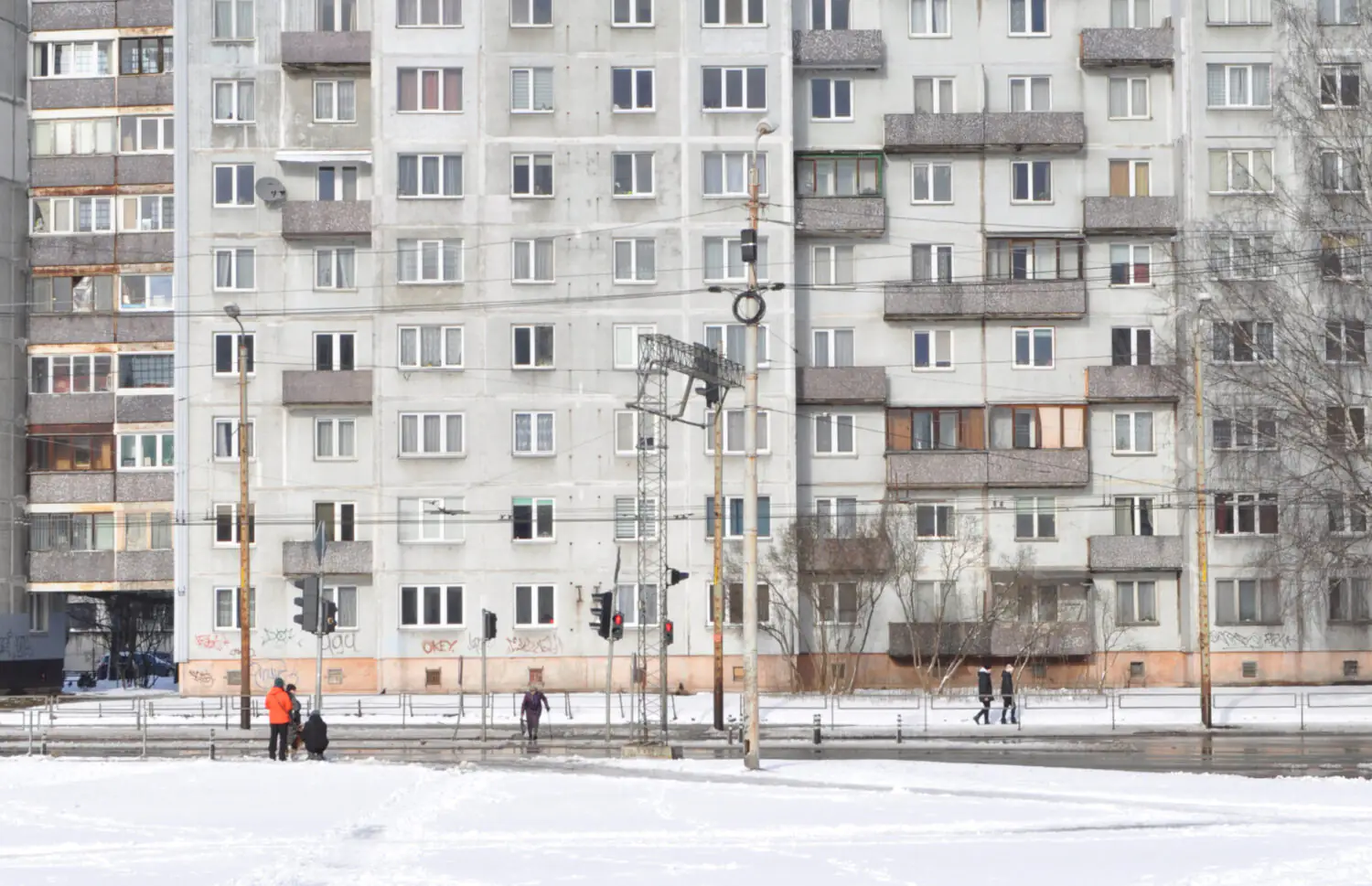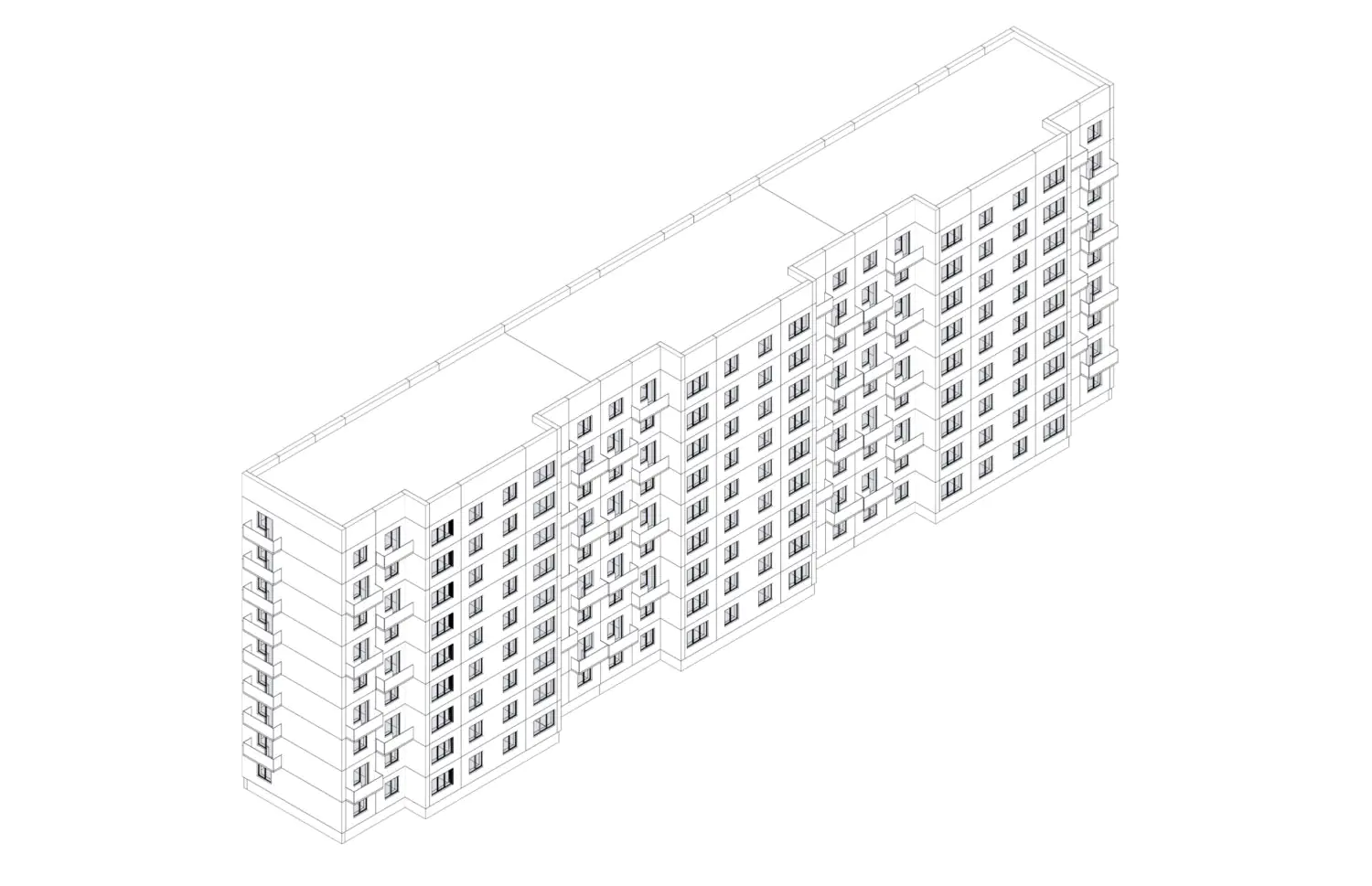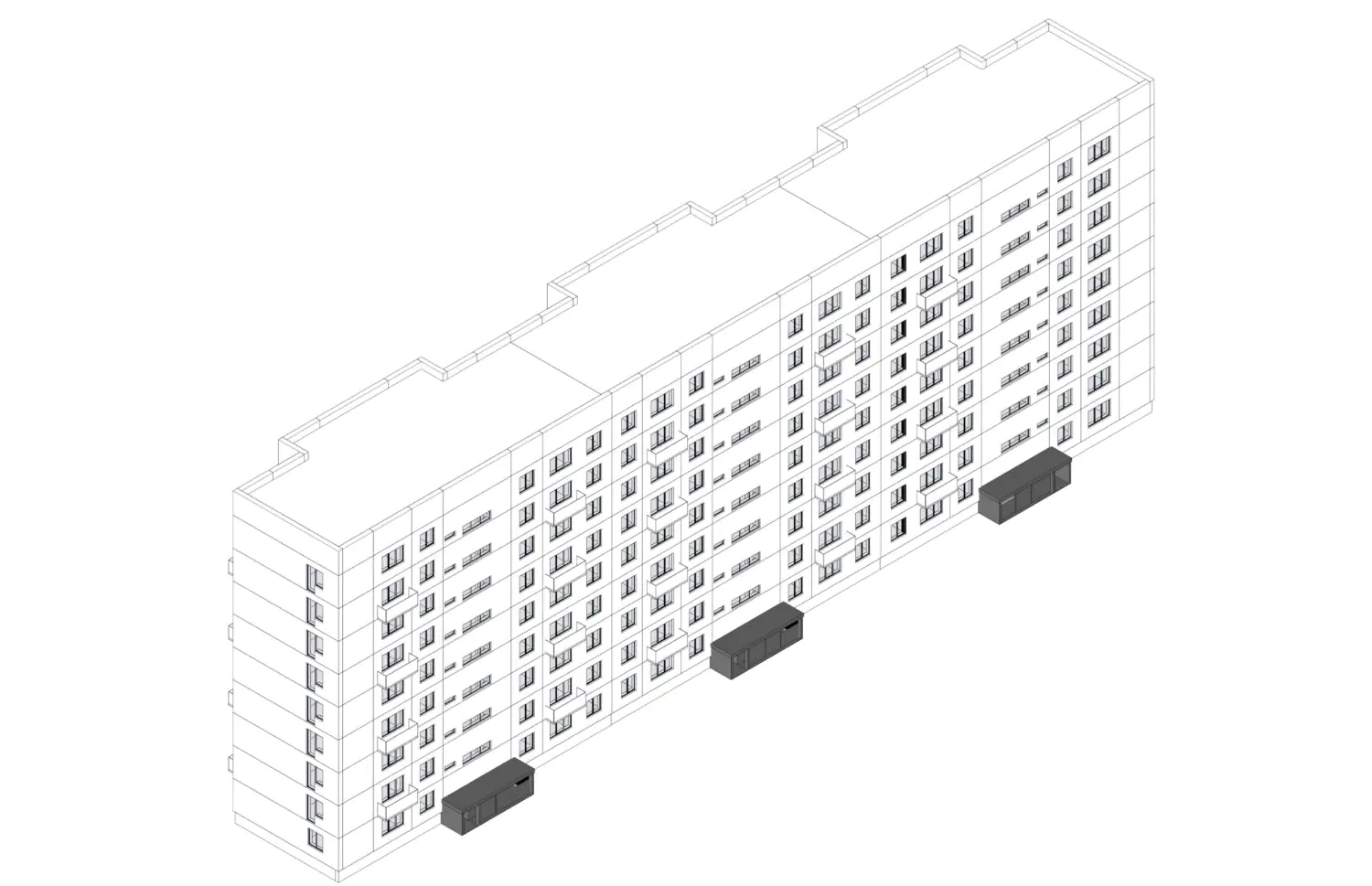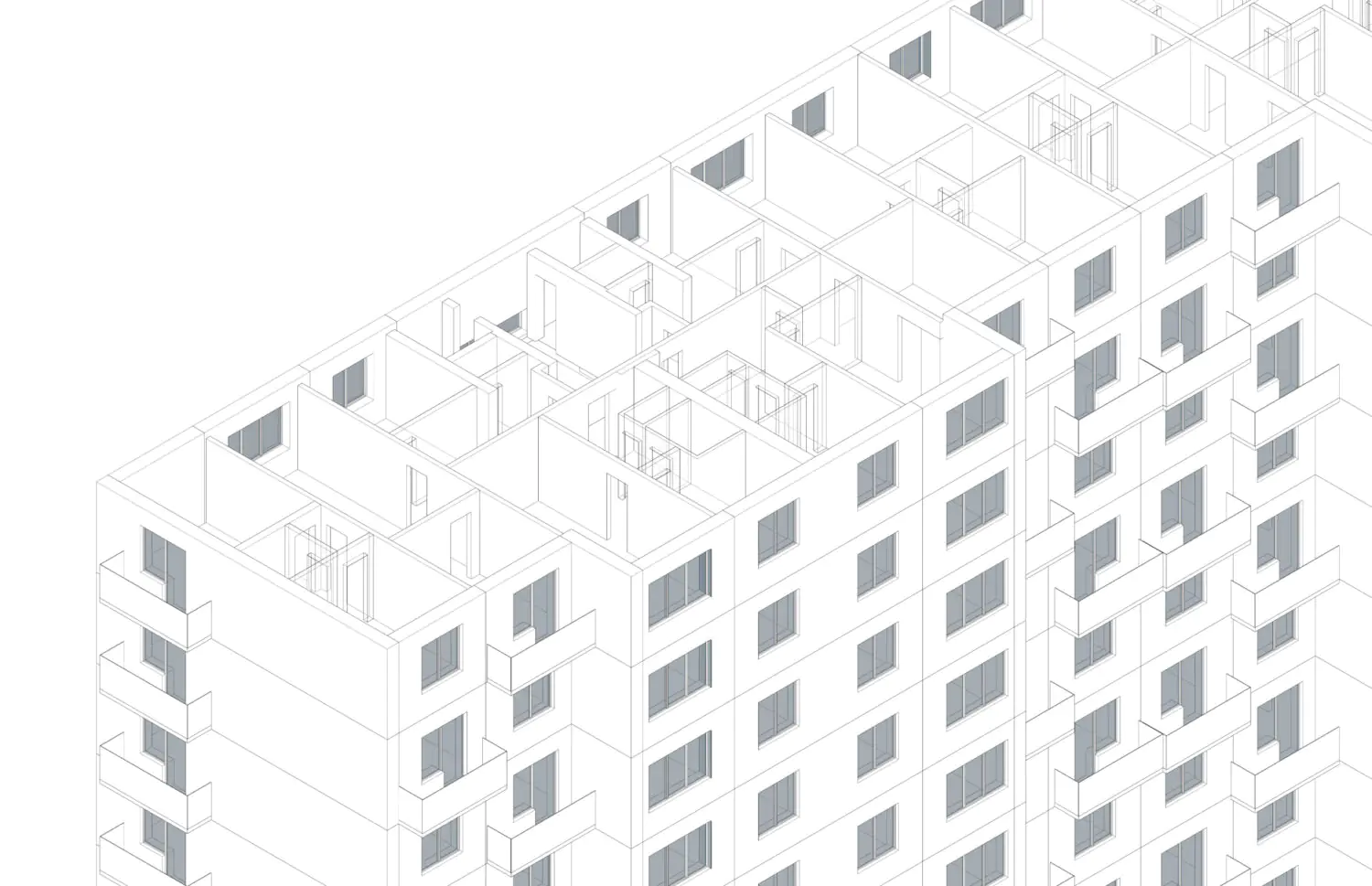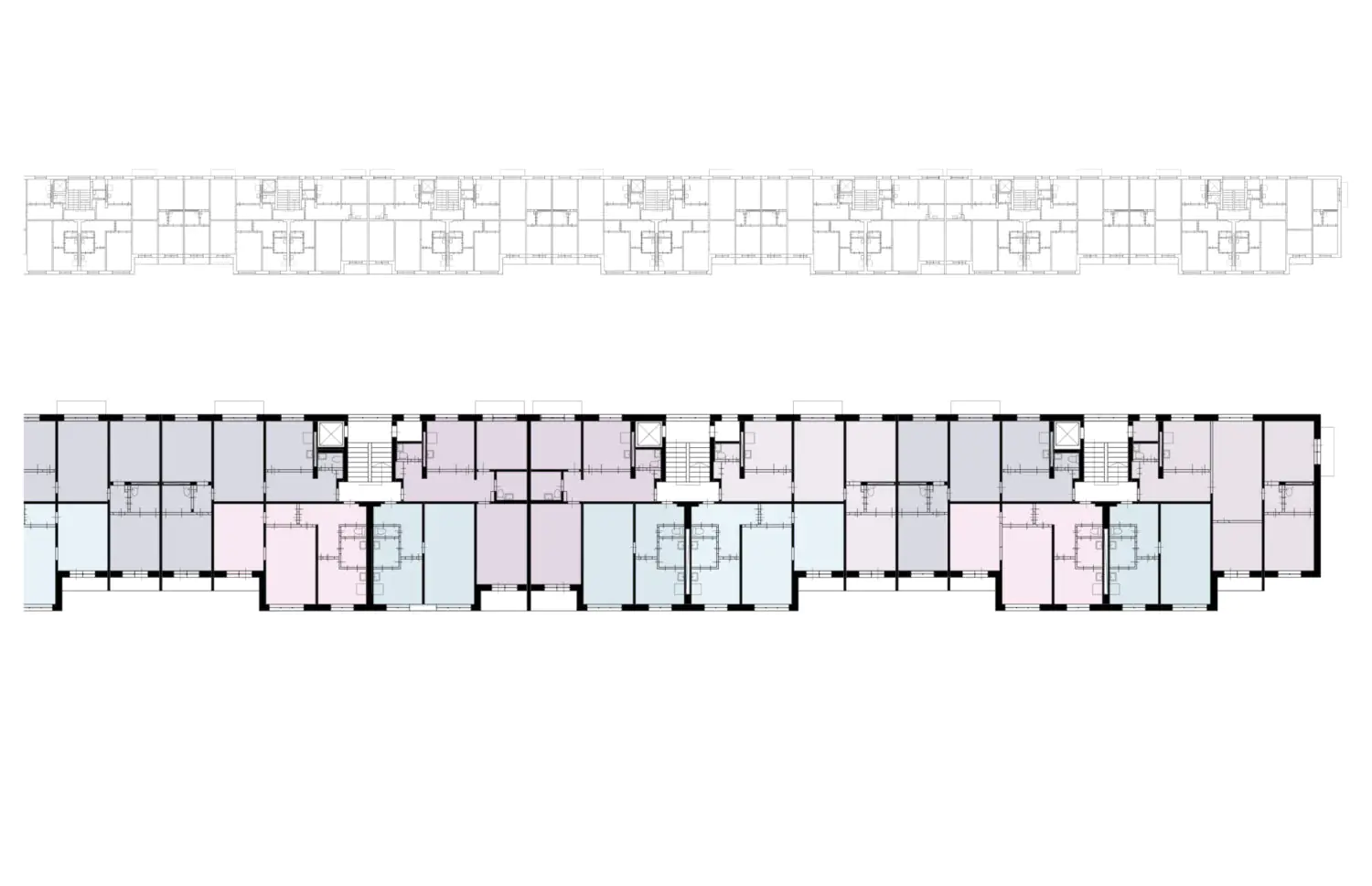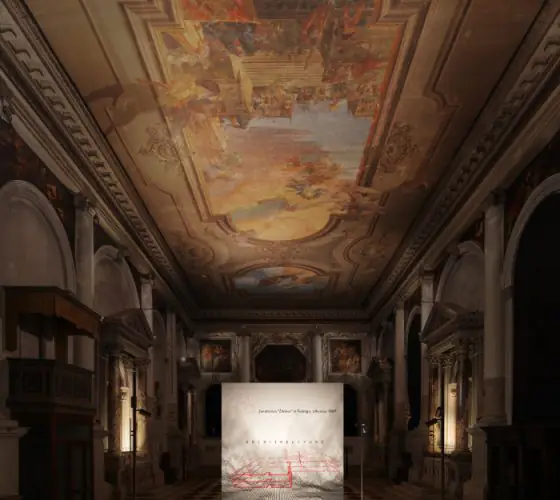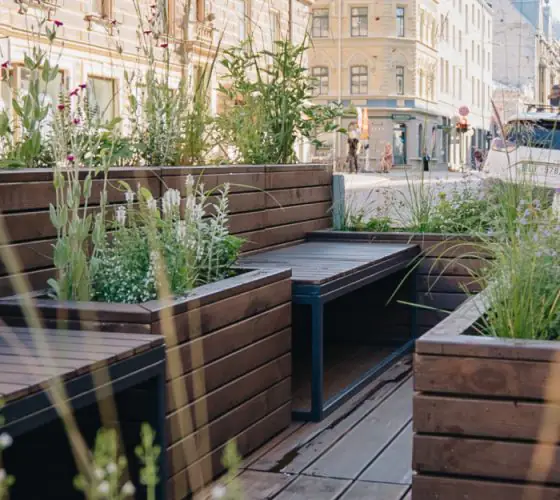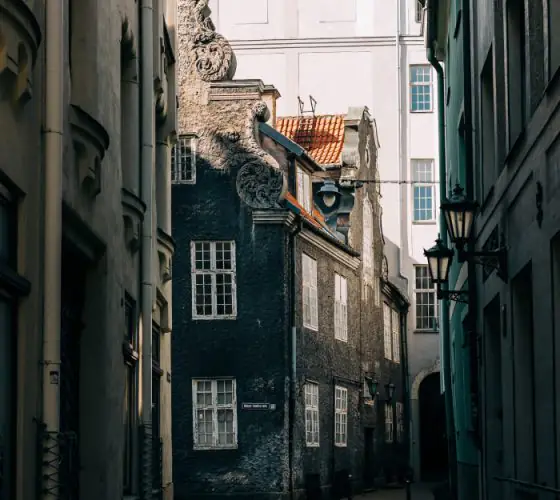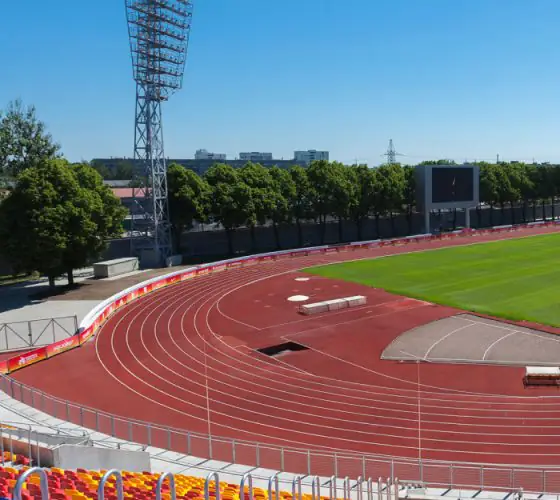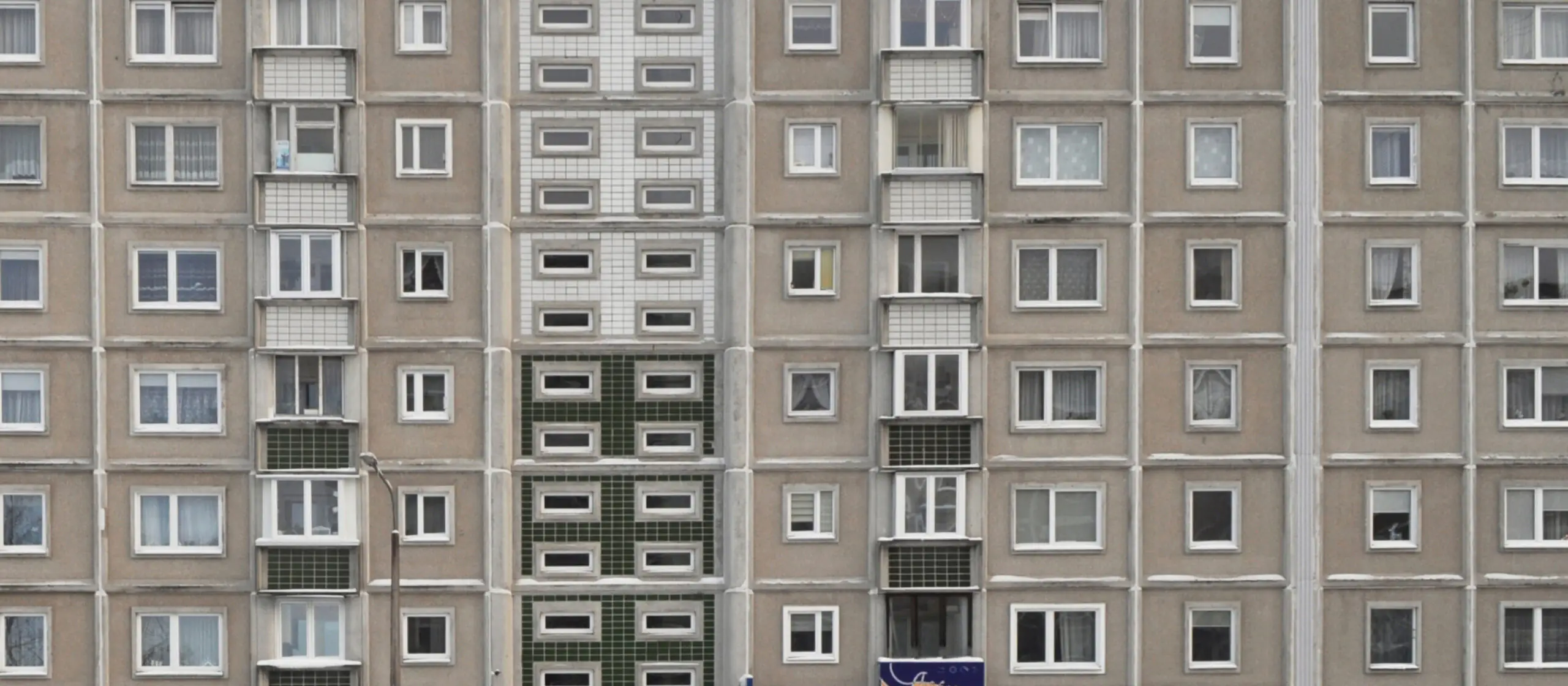
Photo: Līga Ramata. Instagram micromacrorayon
The post-war mass production of housing in the Soviet Union was possible because of standardisation—you can find more about it here. During the Soviet Union, 680,000 new buildings were built in Latvia, most of them constructed between 1960 and 1990, and, of course, most of them housing. This was possible because essentially everything was predetermined—materials, construction techniques, liveable square metres and apartment layouts.
The production of such scale was achieved by developing various set building prototypes or, as we call them here, building series. However, not all Soviet-era panel blocks were made equally. As time went on and priorities, standards and ambitions changed so did the microrayons and buildings within themselves.
Since around 70% of residents of Riga reside in microrayons, it’s highly probable that you’ll encounter one of many apartment series built in Riga at some point in your life, either as a buyer, renter, inhabitant or even as a designer or real estate agent. No matter the circumstances it’s useful to get familiar with and learn about some of the advantages and disadvantages of building series in Riga.
Building Series 316 and 318
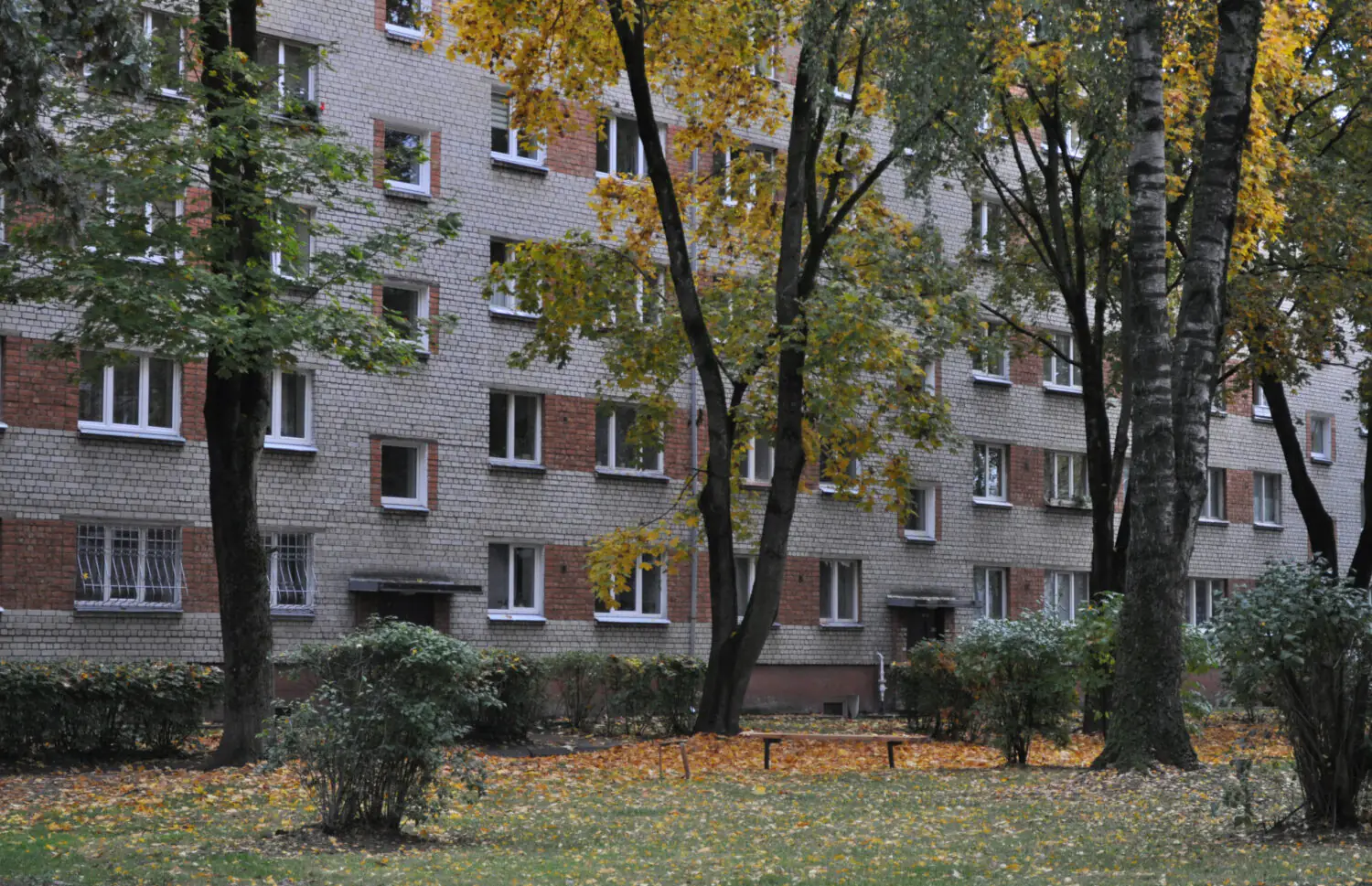
Photo: Līga Ramata. Instagram micromacrorayon
While khrushchyovkas usually refer to 5 storey brick or panel blocks erected under Nikita Khrushchev (that is, in the period from 1953–1964), in Latvia the term is often used to specifically refer to building series 316 and 318. Besides being some of the most well-known Soviet apartment blocks they’re also some of the earliestseries in Riga. In fact, the first microrayon, Āgenskalna Priedes, is composed of khrushchyovkas (or more specifically building series 316). They are recognisable by the white silicate brick facade often with accents in red brick, mostly 5 storeys. The earliest versions don’t have balconies, but there are many variations of this block since they were built from the early ’60s up until the ’80s.
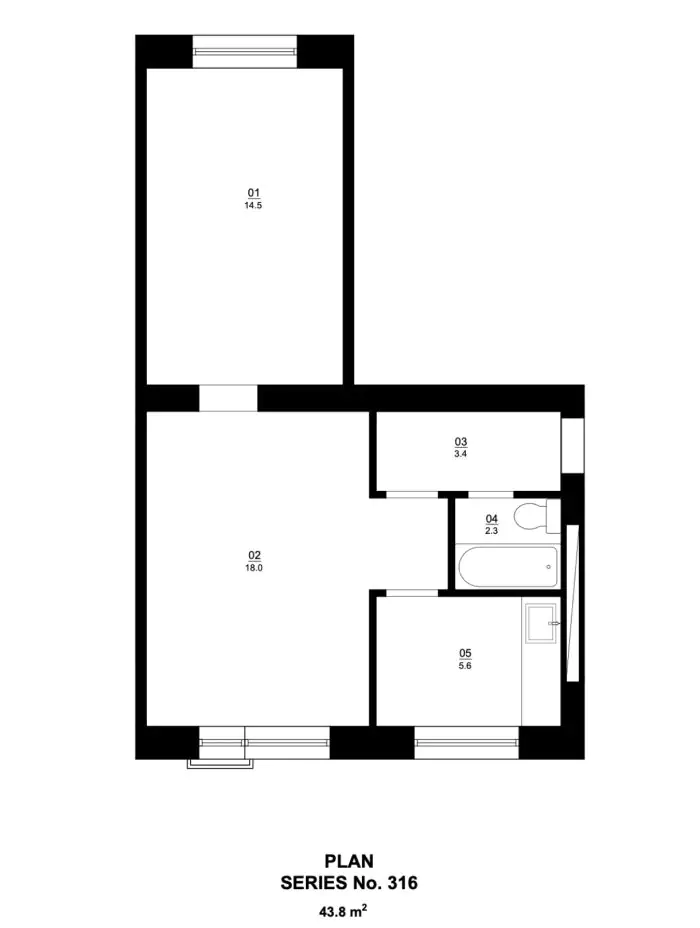
Since they were one of the earliest examples of building prototypes, the rooms are quite narrow and overall the flats are on the smaller side with poor sound insulation. However, the brick construction means that it has better insulation than a lot of the panel buildings and there are many possibilities for modifying the apartments since a few of the inner walls are load-bearing. A lot of people take advantage of this to enlarge the small bathroom or open up the kitchen, for example. Sometimes even the walls between apartments are not load-bearing allowing people to combine them in a single much bigger apartment.
The Old Lithuanian Project: Series 467-A
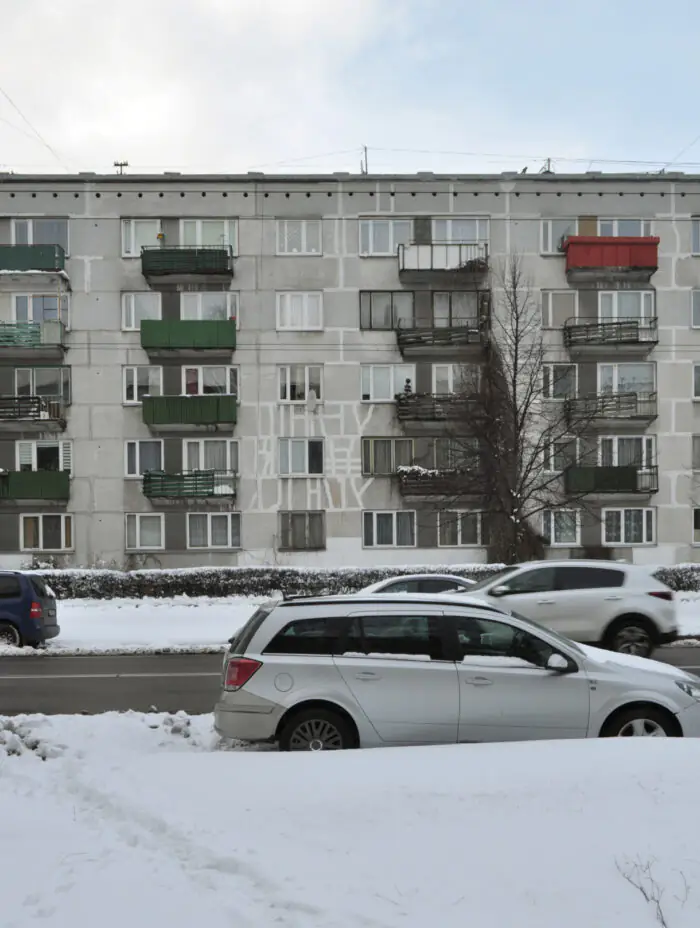
Photo: Līga Ramata. Instagram micromacrorayon
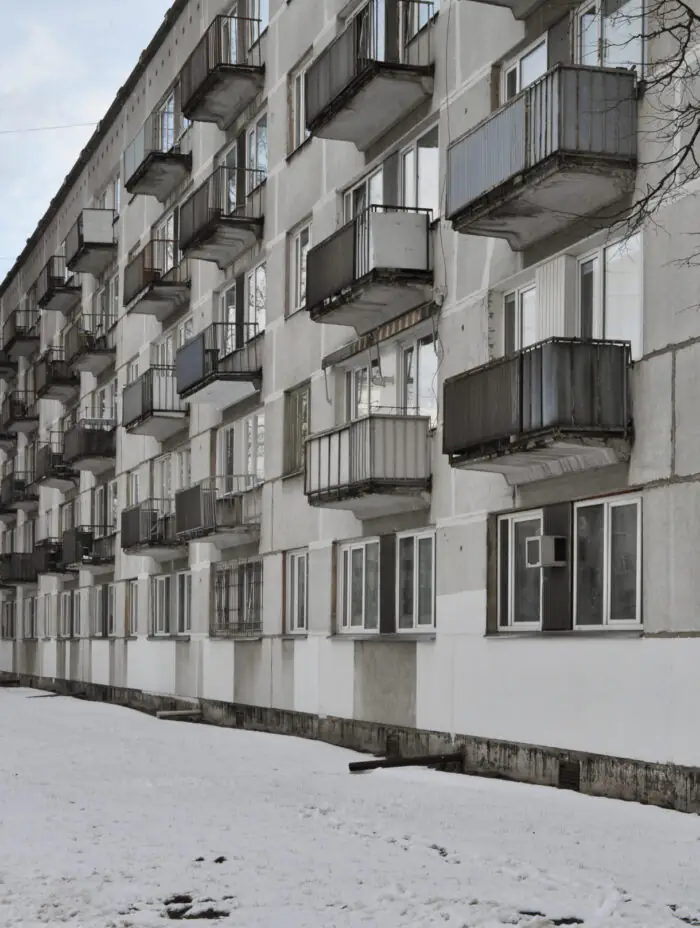
Photo: Līga Ramata. Instagram micromacrorayon
The building of the so-called Old Lithuanian Project or series 467-A started quite early on as well. They’ve been used since the 60s and are quite common across Riga’s microrayons. However, it wasn’t actually designed in Lithuania, the Moscow building series 464 was used as a base and Lithuanians (and later on Latvians) improved and redeveloped it. Similarly to series 316 and 318 it has 5 storeys, but it was built using prefabricated concrete panels instead of bricks with quite fragile-looking balconies.
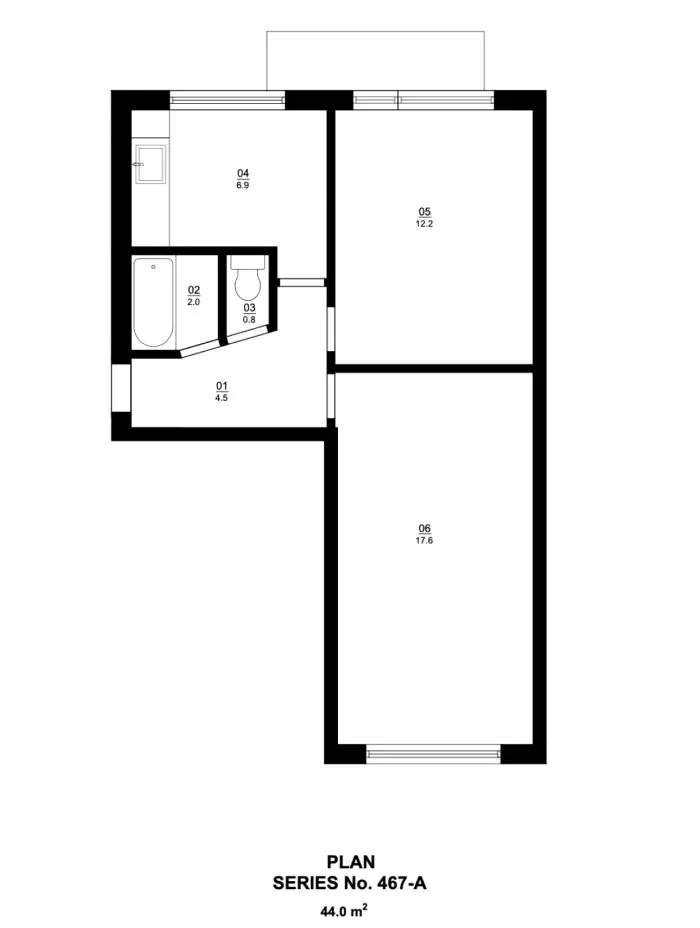
The Old Lithuanian Project has some of the same issues as series 316 with added problems with waterproofing and insulation. In terms of planning, the biggest difference here is that the bathroom is separate from the toilet, which was later done in most of the apartment series. However, again, these apartments are a lot more flexible than some of the later series when it comes to renovation.
The New Lithuanian Project: Series 464
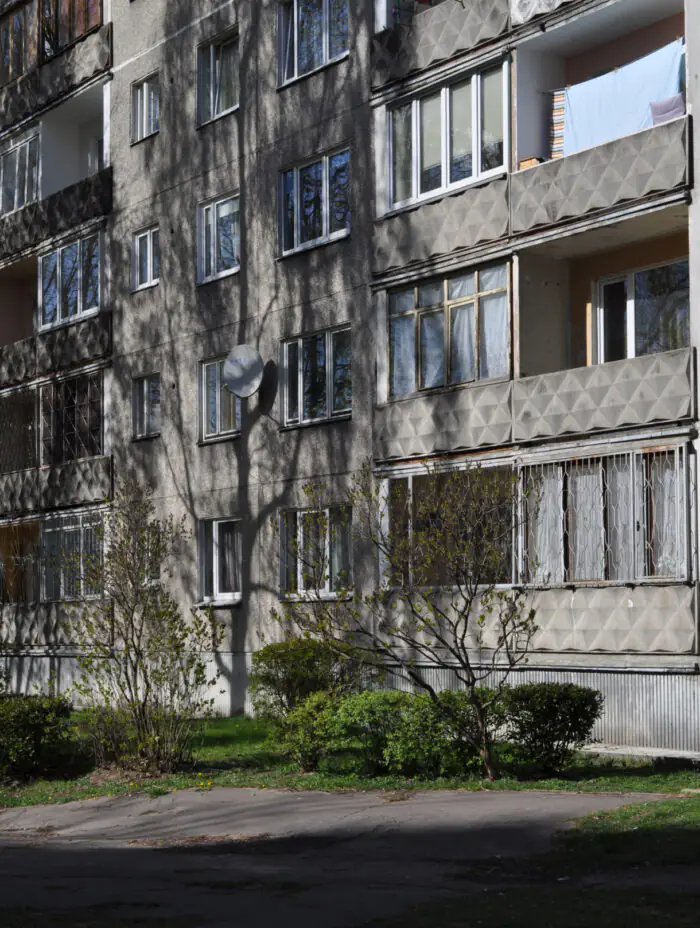
Photo: Līga Ramata. Instagram micromacrorayon
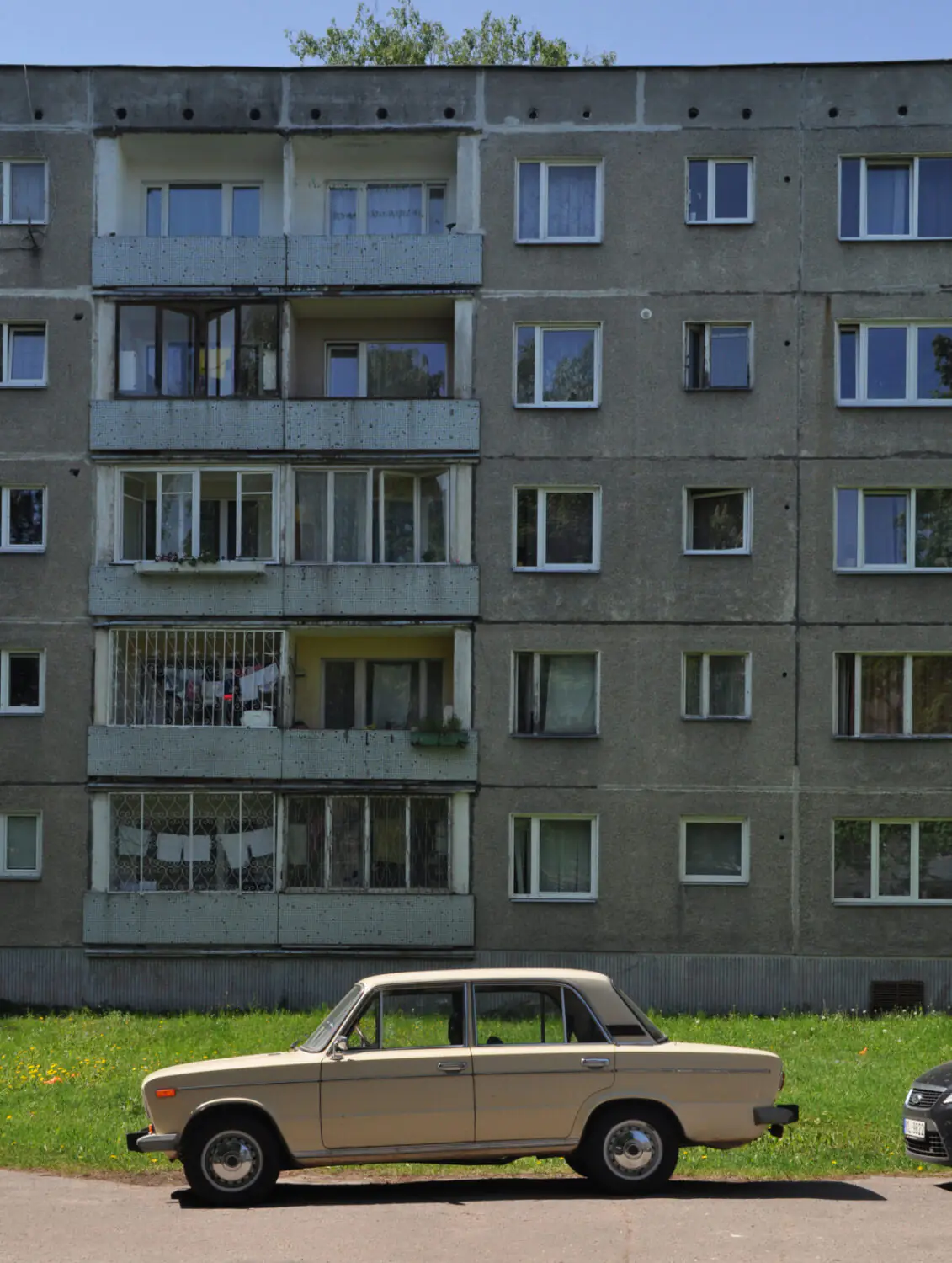
Photo: Līga Ramata Instagram micromacrorayon
The New Lithuanian Project, similarly to the old one, was not actually developed in Lithuania. In fact, the Lithaunian building series 464 looks different from the one here. Series 464 were produced by Riga Building Construction company which later transitioned to producing series 119. They are quite similar to the old Lithuanian project, but the facades have been improved with loggias instead of metal balconies.
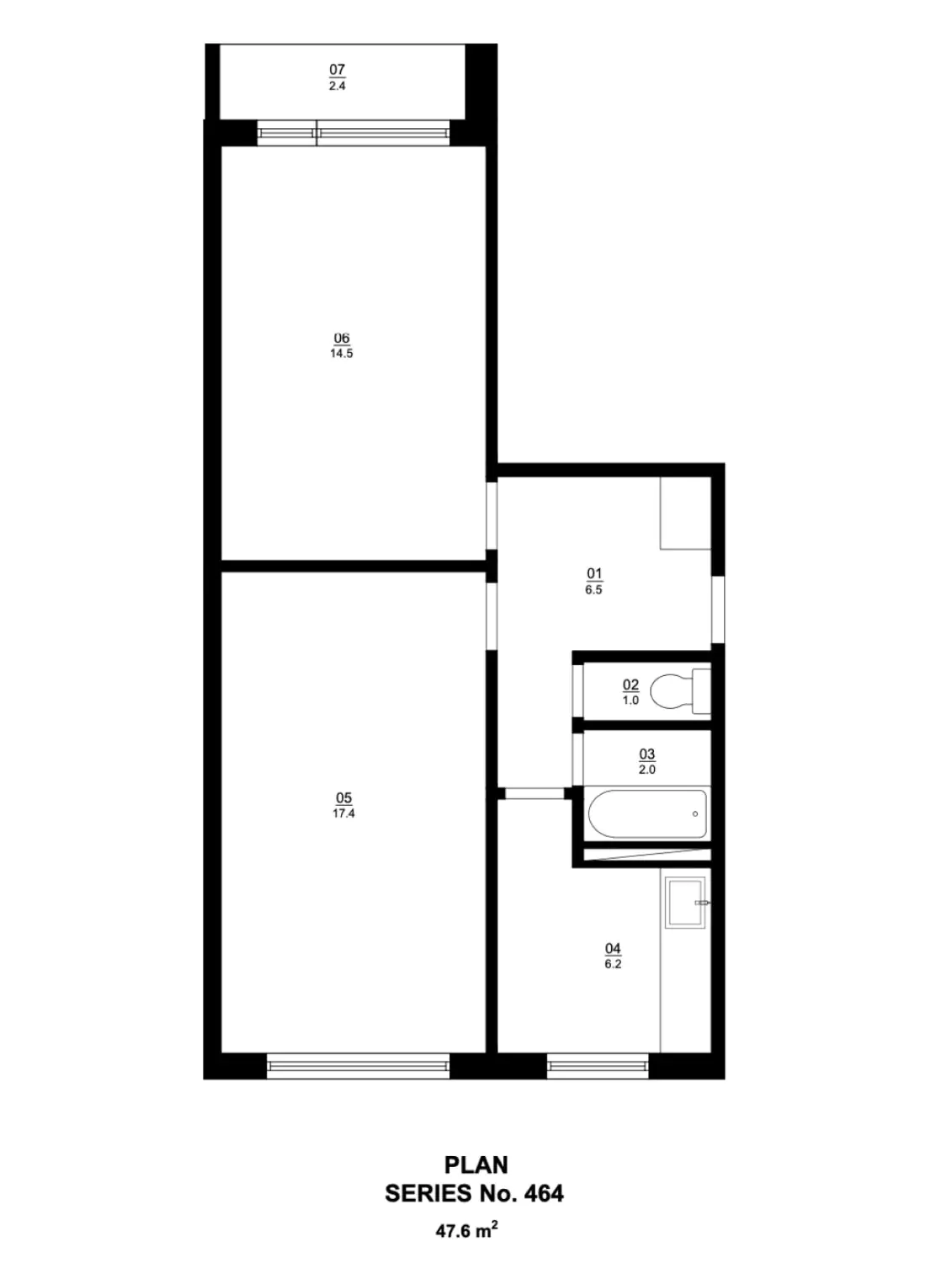
However, when it comes to renovation and re-planning there aren’t that many options as a large portion of the inner walls are load-bearing despite being quite thin. Some possibilities include combining the toilet with the bathroom or demolishing the built-in closet. And, of course, glazing the loggias and using it as an extension of the living space, something you can often see in microrayons.
Series 103
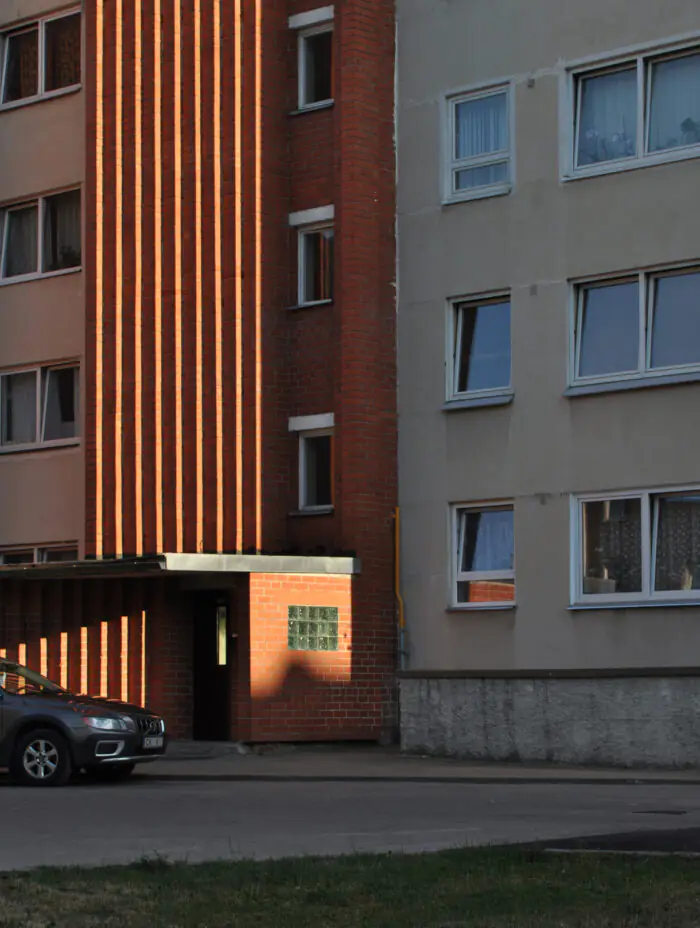
Photo: Līga Ramata. Instagram micromacrorayon
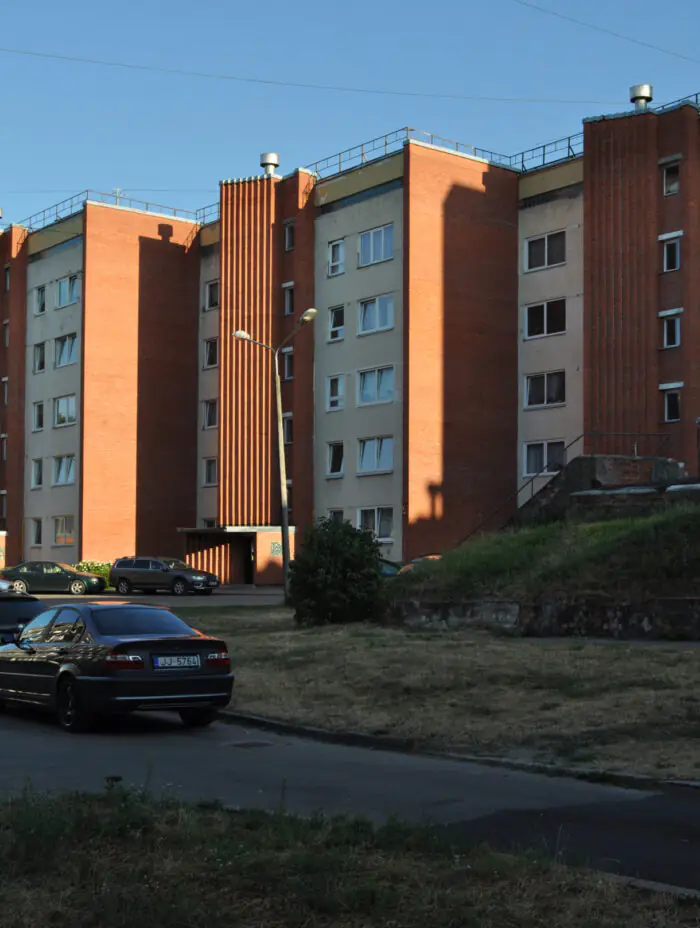
Photo: Līga Ramata. Instagram micromacrorayon
Series no.103 are considered to be one of the most visually interesting. These series use load-bearing brick cross walls mixed with prefabricated panels. Their construction method used, the load bearing brick walls more specifically allowed for many iterations of the project since the sections could be moved forward and back, making the forms more interesting and diversel.
They were built from the early ’70s all the way to the ’90s, but series 103 does not dominate any single microrayon like series 602 do in Purvciems or 119 in Zolitude because they required more time and work to be constructed. Although used as accents in many microrayons across Riga, you can find a lot of local iterations of this in towns across the country.
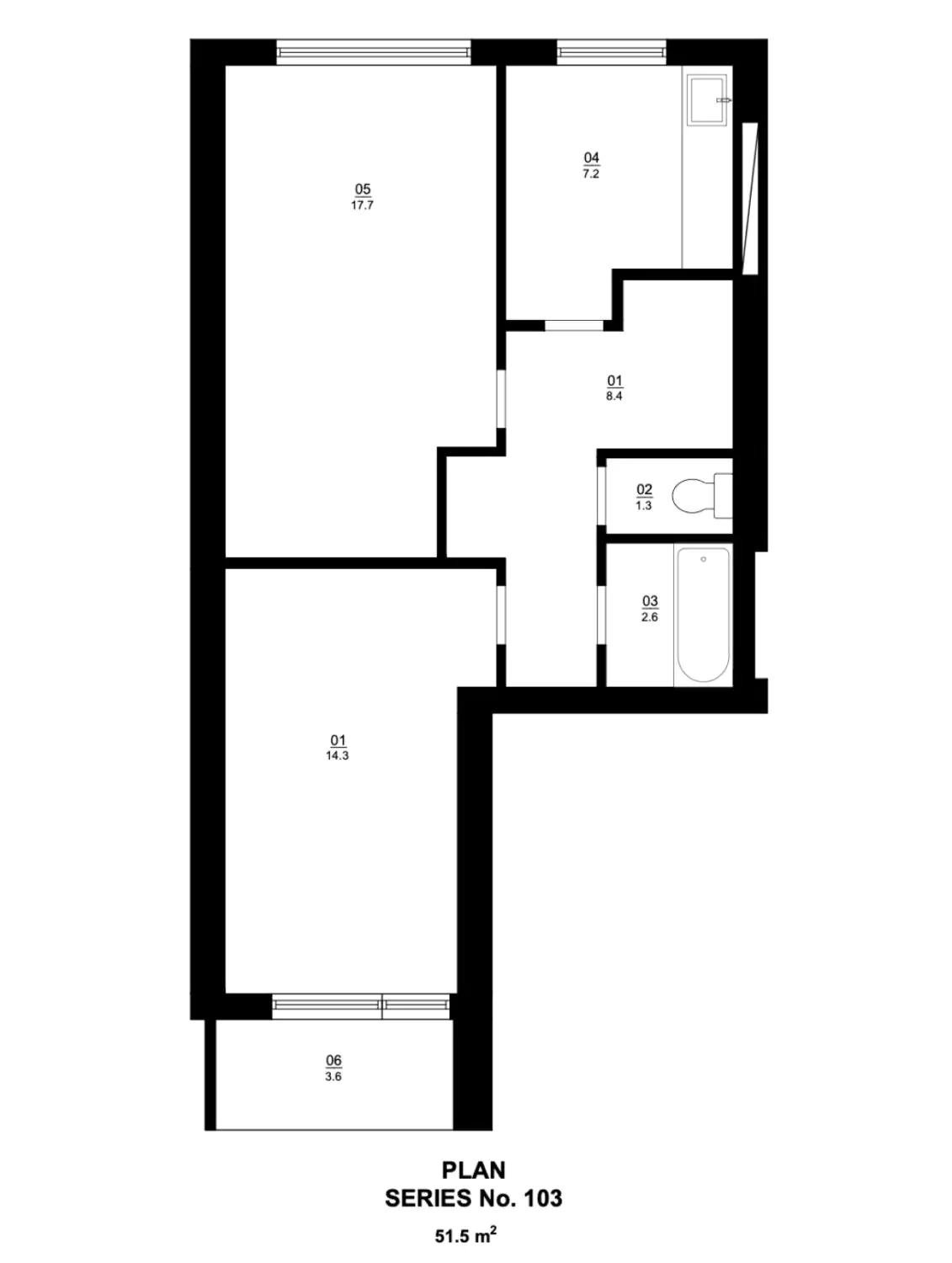
This project was also often used as a base for various “special projects”. Most commonly these buildings are 5 storeys, however there were many iterations of this. Because of the bricks used they are better insulated than some of the panel blocks and overall the quality of construction is better, the layouts also seem to be more comfortable with space for built-in furniture. Although, if you do want to renovate these and change the layout, there are many possibilities for that.
Series 602
Series 602 is one of the most common and well-known building types in Riga even though it was constructed for a relatively short period of time from the mid-70s to the early 80s and soon replaced with series 119. It is based on another building prototype developed in Leningrad in 1967 but modified in the early 70s to make a more localised version. Some of these buildings had common space on the ground floor where the residents could store strollers or bikes, however, in reality, these have turned into commercial properties or even added onto existing flats.
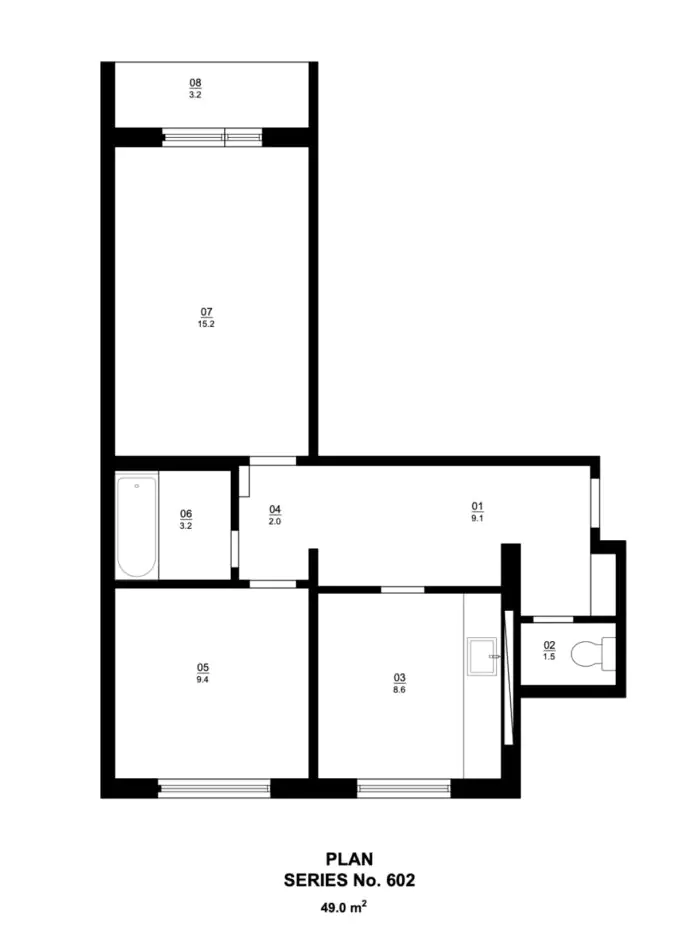
These are mainly 9-storey buildings constructed of load-bearing prefabricated panels and reinforced concrete slabs. The exterior wall panels have some insulating properties, however, there have been issues with waterproofing due to micro-cracks in the panels. Another disadvantage of this series is that the load-bearing interior walls have been set only around 3.2 meters apart making it quite difficult to modify the apartments. That being said, the layouts are quite comfortable and practical and the stairways are more spacious than in some of the other building types.
Series 467
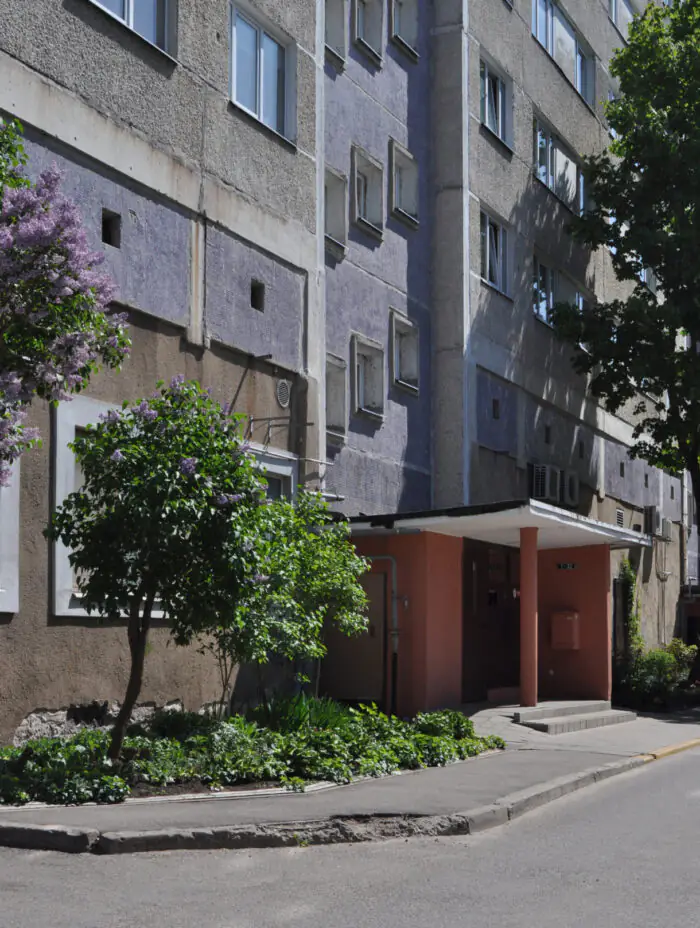
Photo: Līga Ramata. Instagram micromacrorayon
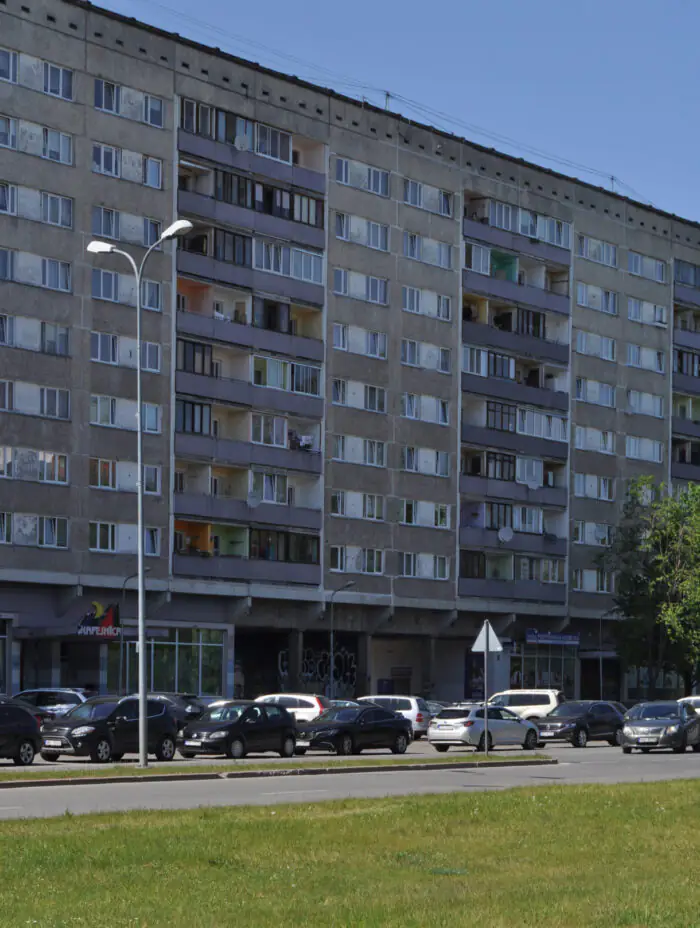
Photo: Līga Ramata. Instagram micromacrorayon
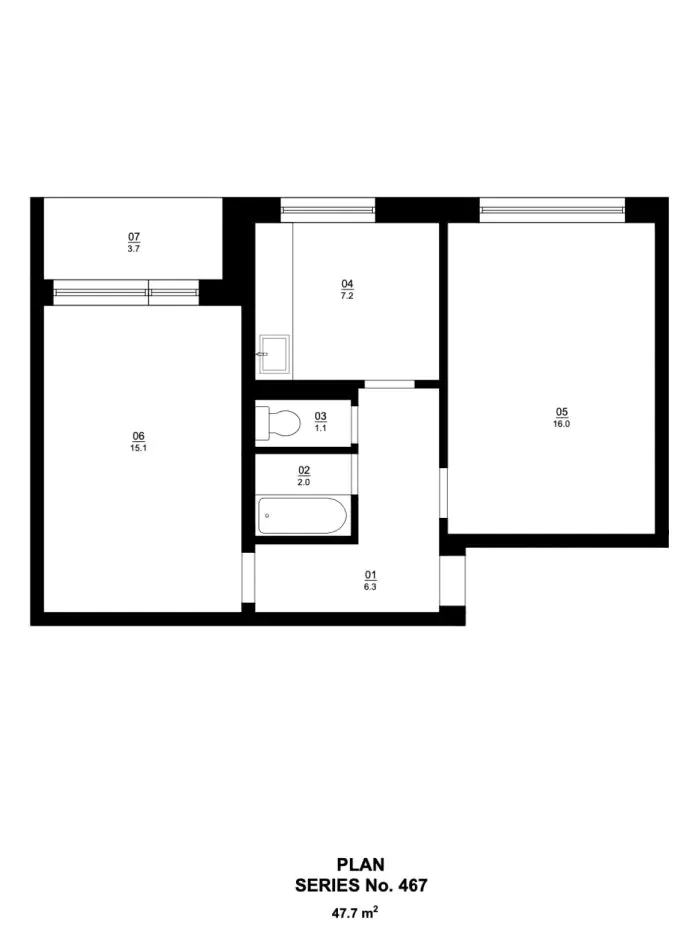
Series 467 often gets mistaken for building series 602 and for a good reason. They look fairly similar, but a good way to tell these apart is by examining the facade. Series 467 use different finishes for the facade (like gravel plaster) and in general tend to be a little more decorated than the earlier 602 with various colours and materials used. That being said, the layouts are fairly similar to 602, with the same issue of very few re-planning possibilities, although the original layouts are reasonably comfortable.
Series 119
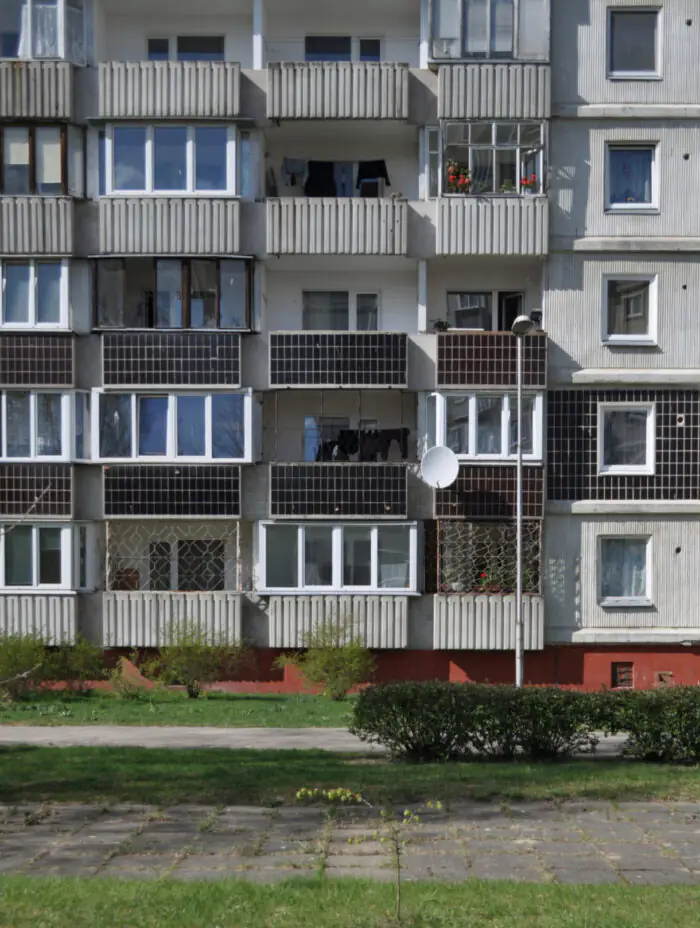
Photo: Līga Ramata. Instagram micromacrorayon
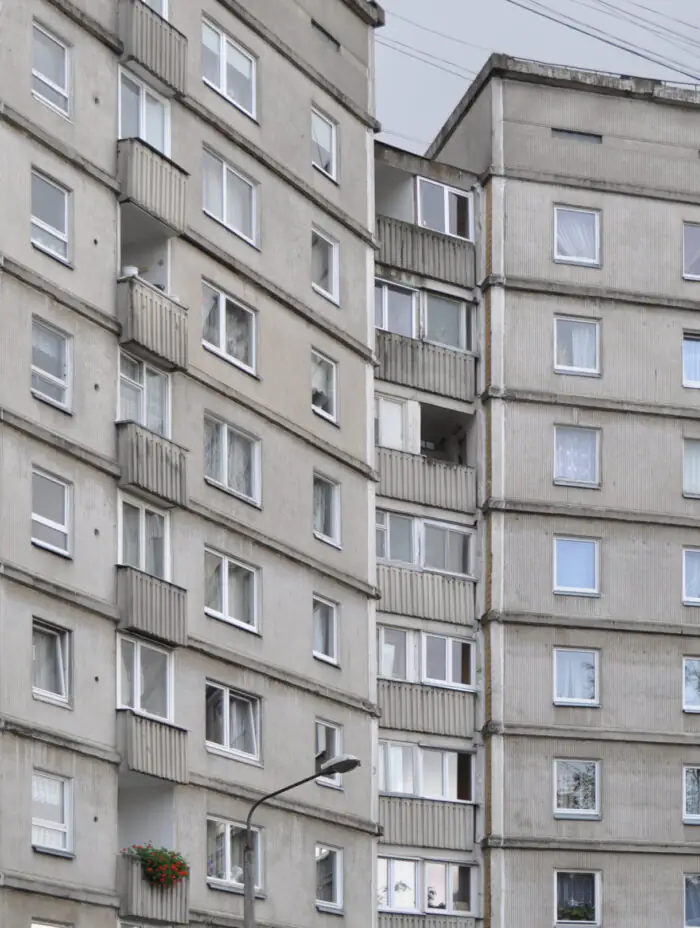
Photo: Līga Ramata. Instagram micromacrorayon
The building series 119 is one of the newest in Latvia, they were constructed in the early 80s and can be found in all of the newest Riga’s microrayons, for instance in Zolitūde and Ziepniekkalns. It’s worth noting that it was entirely designed in Latvia and is now considered to be one of the most popular and sought-after Soviet projects.
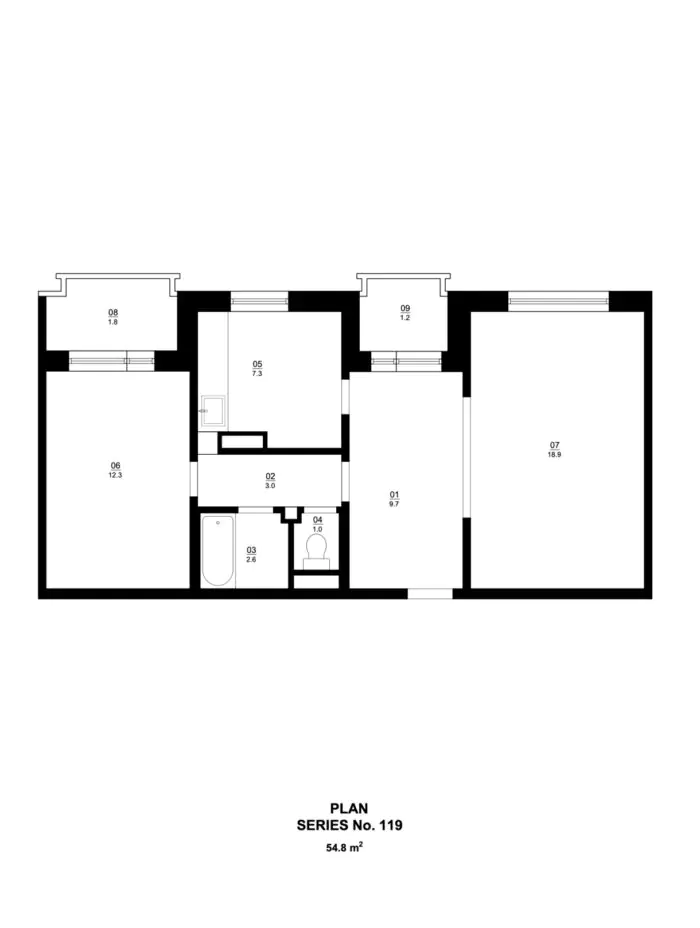
This is due to their comfortable and relatively spacious layout and quite a unique large entrance hall with a big window at the end. This series came to be during a time when the professionals and higher-ups were rethinking their approach to microrayons in order to make them more diverse, interesting and comfortable reflecting this new thinking. Series 119 is one of the most expensive Soviet projects (along with series 103 and 104) because it has wide possibilities for reconstruction and redevelopment. However, the disadvantages include poor sound and heat insulation.
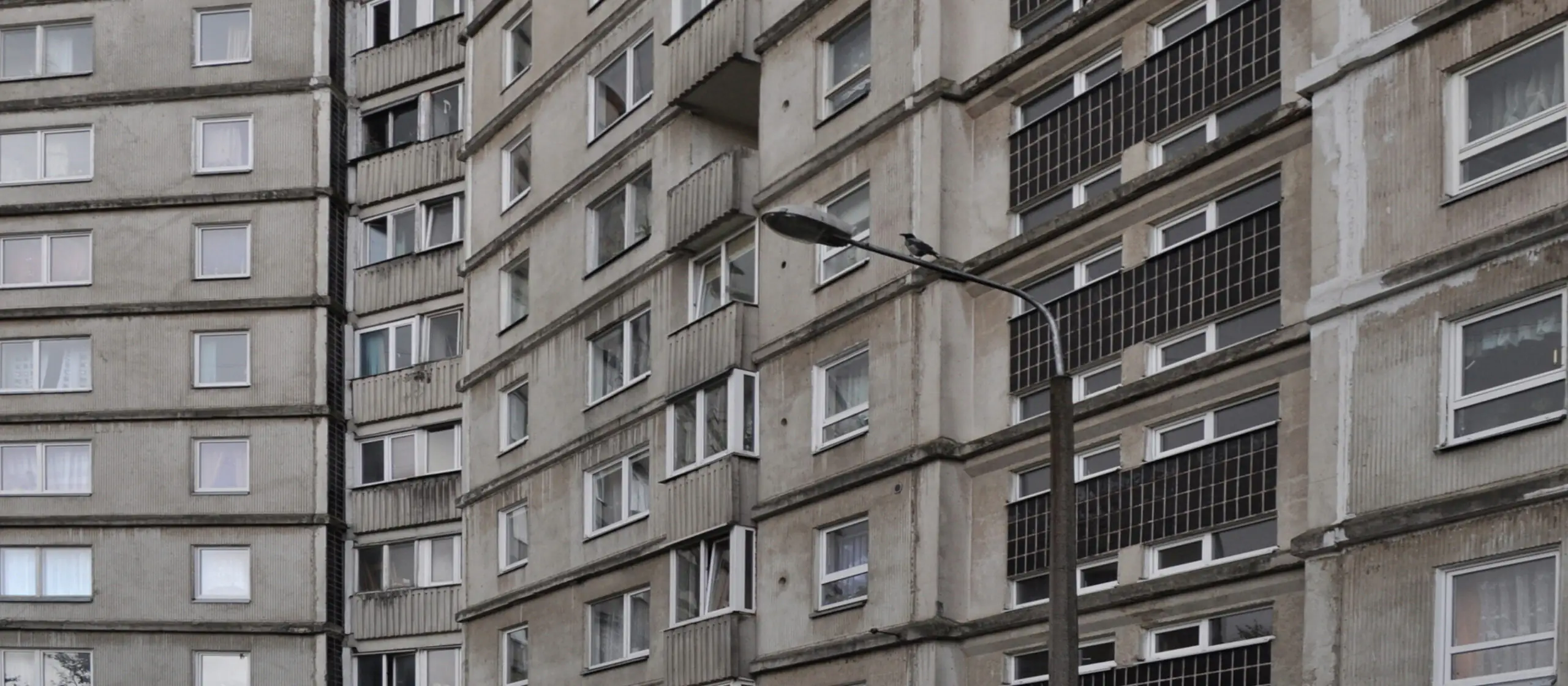
Photo: Līga Ramata. Instagram micromacrorayon
Soviet housing series make up a large part of Latvian housing stock and it’s important to understand the differences between these buildings rather than view them as a homogeneous mass. Throughout the analysis of the various building series we can see how construction and living standards increased while some issues still persisted. But of course, there are similar characteristics that these buildings share due to socialist planning and centralisation, especially compared to some of the new housing projects here.
Thanks to careful planning, these buildings tend to be well connected with easy access to stores, schools, kindergartens and hospitals, green areas—and they are also much more affordable than new housing. However, some of the neighborhood infrastructure is outdated, there are problems with parking (because the neighborhoods are designed for a completely different number of personal vehicles), and the buildings themselves are not as energy efficient as new projects.
But Soviet-era panel houses are not the unambiguously bad buildings that they are perceived to be: it is important to look at them in a balanced way and recognize their potential, because housing problems in former socialist countries cannot be solved by building new houses alone—it is necessary to take care of the existing urban stock and improve the environment around it.
Read more about Riga’s microrayons in our other article.


